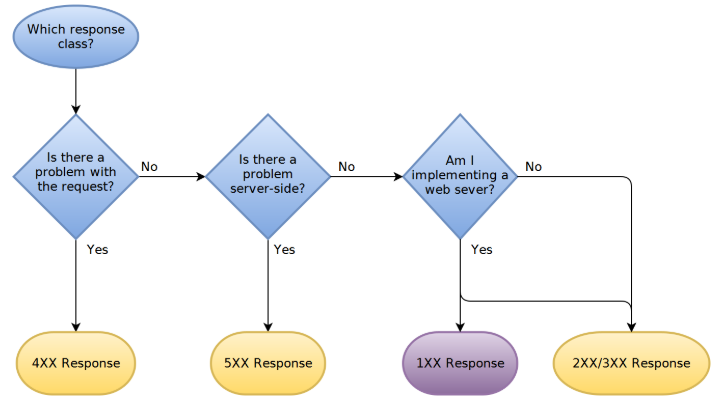Why HTTP Status Code matters?
Here I am finally!! Jan 1st 2019 with a hope of making a change in me trying to articulate my very first blog post. I promise this is gonna be a strictly short read.
Introduction
I have been developing REST API’s for past few years and this question of Why HTTP status codes are important to be considered always strikes me. Choosing the right status code for different context seems a hectic task, where I find some status codes are defined unnecessarily. So the real question is why we need status codes and how we can make sure we have chosen the right code during the design of any REST API.
The real hassle
The two of the most common status codes that any developer would come across are:
- When the page renders or the data needed is available then Great! return
200. - If data/page does not exist then return
404.
The interesting part is sometimes the most common known status codes even question you back like below:
- Whether you defining it correctly or not?
- Is your design compliant with Roy-fielding’s status codes?
- Should the API call return
200or should it be204 No Contentor should it be202 Acceptedor should it be201 created
Gosh!!, this would crack your brain for a while and drinking plenty of water would make you feel better. We are kind of lost now thinking through the real hassle that anyone would face during API design & implementation.
Still Why!!!
Below points can be taken into consideration for an argument favouring specific status codes are unnecessary:
- Status codes which exist now are considered to be general for modelling a website/ API.
- API responses need to be to be specific for an application-specific format
- Should be more specific enough and transparent to show failures and reason out them which helps the client-side to respond in a meaningful manner.
- Then where does HTTP status codes are applicable and useful
The real reason behind the use of HTTP status codes is:
HTTP is a layered system where HTTP library sits between client and server would work better if meaninful response codes are returned.
How to start
Below are a few places where I believed I could have saved time in debugging my application, If I would have used the right status code:
- Not mixing up the usage of
502 Bad Gateway500 Internal Server Error&503 Service Unavailable - Identify the right use of
404 Not Foundand405 Method Not Allowed
Below is a diagram that illustrates a decision tree that could be handy in deciding the status codes depending on the context of use.
 General decision tree diagram for choosing HTTP codes (Source: codetinkerer.com)
General decision tree diagram for choosing HTTP codes (Source: codetinkerer.com)
Conclusion
I will be continuing in detail on interesting status codes and its applicability in different scenarios. This will eventually explain in detail the above-mentioned decision tree diagram

Leave a Comment